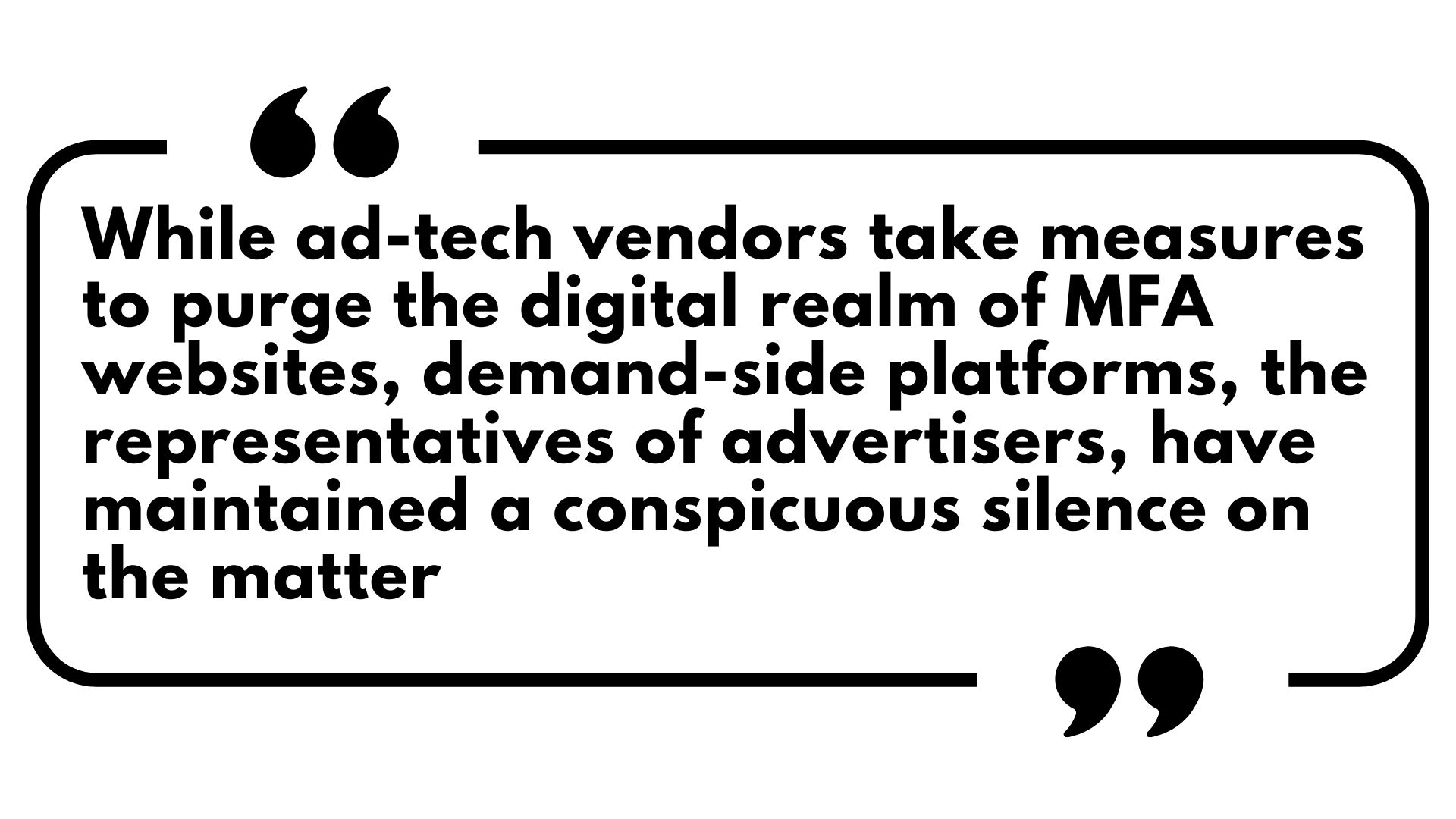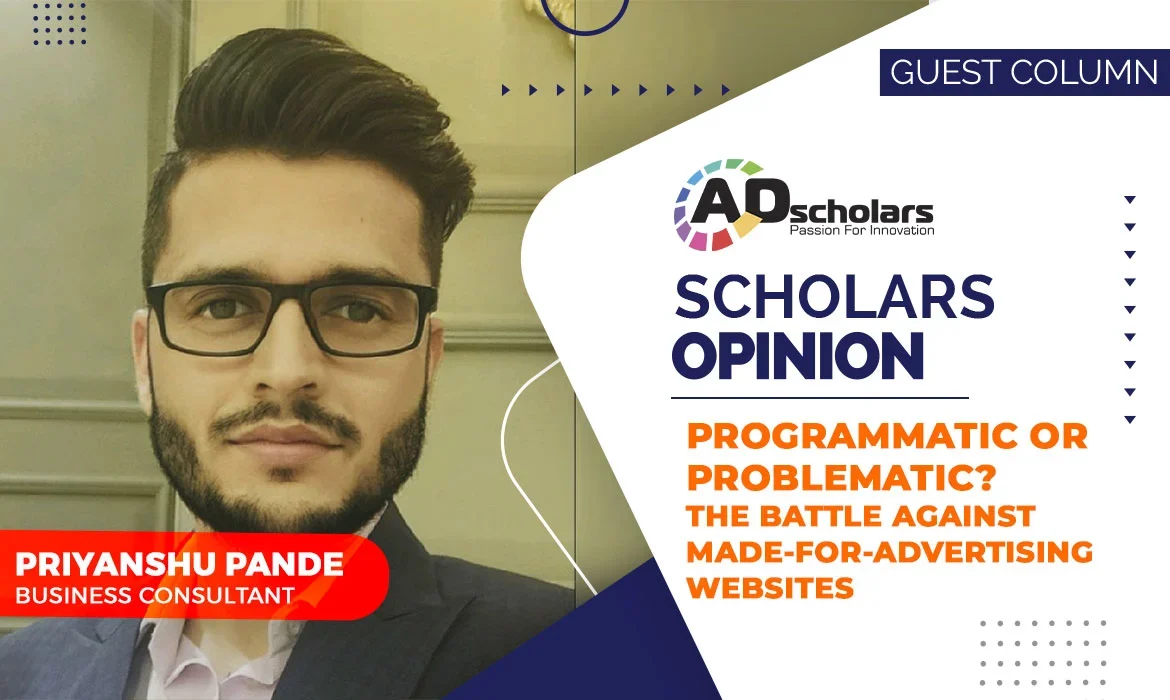Programmatic or Problematic? The Battle Against Made-for-Advertising Websites
The persistent issue of Made-for-Advertising (MFA) websites continues to cast a shadow over the digital advertising industry. These platforms, primarily designed to absorb advertising dollars, have prompted substantial concern and led to a multi-billion dollar spending spree by advertisers.
A recent industry report exposed the magnitude of this predicament, revealing that advertisers collectively poured billions into MFA websites. In response, ad-tech vendors have embarked on a mission to rectify the situation over the past few months. However, the question looms – is their concerted effort making a tangible impact?
The Made-for-Advertising Websites Saga
The saga of MFA websites is not a recent revelation; it has been a thorn in the side of digital advertising for quite some time. CNBC even created a fake website that plagiarized content, underscoring the lack of quality controls for advertisers and ad-tech partners.
This year, the Association of National Advertisers unveiled a damning two-part report. It exposed that approximately 15% of programmatic, open-web advertising dollars funneled into MFA websites, accumulating a staggering $10 billion in ad spend.

In response to the report’s first installment in June, major ad-tech vendors, including Pubmatic, Magnite, and OpenX, pledged to exclude MFA inventory from curated publisher lists sold to select advertisers. However, advertisers navigating the open web still face the challenge of sifting through MFA inventory.
Notably, both DoubleVerify and Integral AdScience, two industry giants specializing in verification and brand safety, introduced distinct detection tools. These tools aim to shield advertisers from the clutches of MFA inventory, representing a significant step in fortifying the digital advertising ecosystem.
While ad-tech vendors take measures to purge the digital realm of MFA websites, demand-side platforms, the representatives of advertisers, have maintained a conspicuous silence on the matter. This silence prompts contemplation about their stance and the role they play in mitigating the MFA challenge.
Important steps for advertisers
Here are five essential steps for advertisers to elevate their approach and drive efficiency gains:
- Active Stewardship: Advertisers must take the reins and actively steward their media investments. It’s time to move away from complete delegation to agencies and embrace a more hands-on role in ensuring the efficacy of every advertising dollar spent.
- Data Access Contracts: Establishing direct data access contracts with primary supply chain partners is crucial. Transparency and data access rights are inseparable. Advertisers should consider direct contracts with DSPs, SSPs, and Ad Verification vendors to maximize transparency and control over data.
- Agency Partnerships with Full Transparency: Construct agency partnerships that provide complete access to data and full transparency of websites purchased on media buys. Understanding the distinction between the agency acting as an agent or principal is vital. Advertisers need clarity on when agencies are obligated to act in their best interests and ensure contractual transparency.
- Quality Over Quantity: Prioritize quality media buys over chasing low-cost inventory. Cheap CPM buys may lead to non-viewable and non-measurable media purchases. Striking a balance between cost-effectiveness and ad quality—ensuring viewability, fraud-free interactions, and brand safety—is essential for sustainable advertising efforts.
- Exclusion of “Made for Advertising” Websites: Demand the exclusion of “Made for Advertising” (MFA) websites from media buys unless explicitly wanted or needed. Advertisers should assess if MFA sites align with their brand suitability standards for content and user experience. Clearly defining the tolerance for the inclusion of MFA inventory in campaigns is essential.
As the industry grapples with this pervasive issue, the battle against MFA websites unfolds, and the efficacy of these countermeasures remains to be seen. The shadows cast by MFA websites persist, challenging the industry to innovate and fortify its defenses in the ever-evolving digital marketing landscape.
This article is written by Priyanshu Pande, Business Consultant
Priyanshu Pande
Business Consultant | Storytelling | Sports Marketing | Brand Marketing
Priyanshu is a passionate storyteller who has a penchant for building brands and a knack for understanding spreadsheets. With over 16 years in brand & sports marketing, he has worked on all facets of sports business in India – from formulating sports marketin strategies and activating brands to leverage sponsorships to managing atheletes & marketing sports teams & bodies.
Priyanshu’s driving force at work is the obsession to bring brands to life & closer to consumers with the power of design, right messaging & apt medium.
DoubleVerify Unveils Industry-First Holistic MFA Protection Solution
The renowned software platform for measuring digital media, DoubleVerify has recently extended its brand safety and sustainability offering. It attempts to make it possible for advertisers to track and get rid of MFA (Made for Advertising) websites. DV has advanced a precise definition of MFA with this breakthrough. Moreover, it helps marketers recognize and successfully handle MFA-driven challenges. To analyze MFA, DoubleVerify has unveiled its patented process that uniquely fuses human and artificial intelligence auditing. In their brand safety and suitability profile, customers may now easily enable DV’s solutions for measurement and monitoring. DV Authentic Brand Suitability will also be activated to avoid pre-bids.
Concerns about MFA websites
An ANA report was published in June amid worries that AI techniques were hastening the creation of offensive online content. It claimed that 21% (one-fifth) of all programmatic impressions were derived from MFA websites. Moreover, it attracted 15% of total ad expenditure. Additionally, DV carried out its independent investigation, wherein it was discovered that some MFA sites generate hundreds of millions of impressions each month.
Due to the lack of a standardized definition of what MFA is, it has led to misunderstandings. MFA content is often misconstrued as solely bot-driven and fraudulent traffic. But it only represents a small percentage of MFA traffic. Due to their false identities, these websites are excluded from standard fraud controls. On the other side, legitimate human users drive a majority of MFA traffic. They usually are directed to paid channels like social media and content recommendation engines.
Read More: Quotient Enhances DOOH Targeting with Brand Safety Capability
DV’s definition of MFA sites
According to DoubleVerify, MFA sites are the ones whose single purpose is to deliver ads. One can analyze several factors to locate these sites. The factors are set across ad monetization activities, ad traffic sources, and approaches to content creation. Particularly, these websites have the following characteristics.
- Significant ad density compared to the page’s actual content; frequent ad refreshes to optimize yield each visit.
- With hardly any traffic originating from organic sources, monetization is primarily dependent on paid traffic channels – for instance native and social.
- Constant scrolling and browsing through the same domain’s content
- Content that has been literally copied across several websites and is occasionally generated automatically by generative AI.
The approach that DV uses makes it possible to prevent false positives and miscategorization. It accomplishes this by enabling a thorough and complex level of testing. For instance, a website may have a sizable amount of ads while also receiving a lot of direct and search-enabled traffic. The publisher would not fit DV’s definition of an MFA website in this case. DV has mostly given its clients the capability to access MFA sites upon request. Beginning September 20, 2023, DV’s offering will be extended in beta to all advertisers. The solution will continue to change and advance over successive development cycles.
Here’s what they said
Mark Zagorski, CEO of DoubleVerify stated,
DV continues to lead with customer-driven innovation that helps advertisers tackle the rapidly evolving challenges in digital advertising that impact media quality and performance. With the rise of AI tools that can rapidly spawn MFA sites, DV’s own AI tech is crucial in empowering global brands to identify, measure and avoid problematic MFA content in real time and ultimately drive better marketing outcomes.
Jack Smith, CPO at DoubleVerify added,
The term ‘Made for Advertising’ has created significant confusion within the industry. As an industry-leading measurement and verification provider, we believe it’s crucial to lead by example and offer clarity. Our goal is to safeguard advertiser investments and support high-quality publishers who are seeking to monetize legitimate content.
Read More: DoubleVerify Acquires Scibids, Reinforces AI-Powered Solutions



